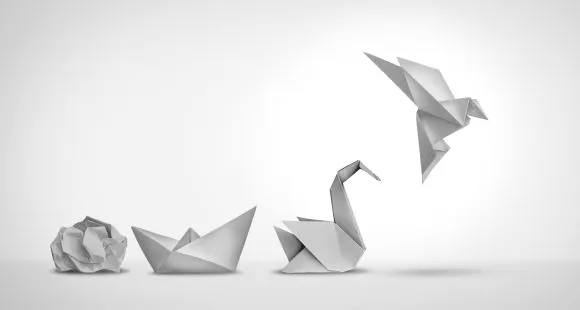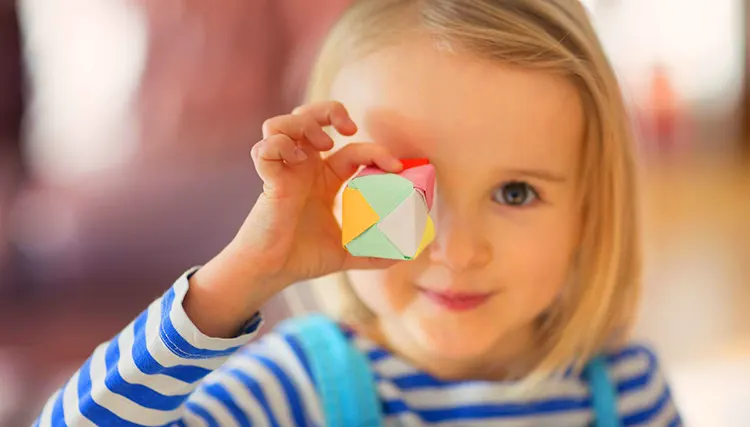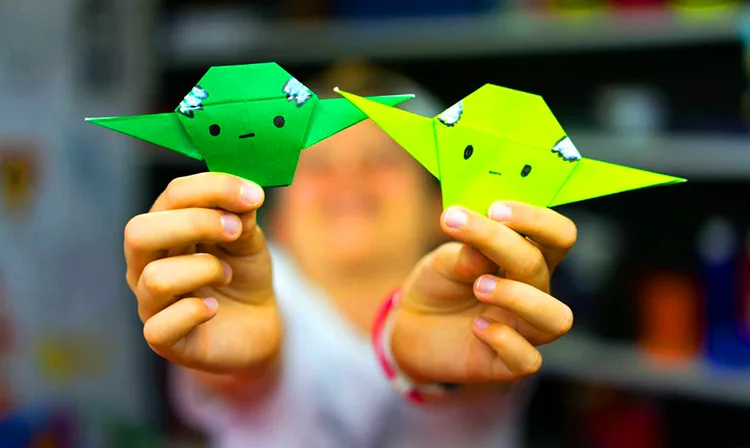Origami and Coordination Development in Children
Origami and Coordination Development in Children
The art of origami holds a highly valuable place in Japanese culture. It is created through different folding techniques applied to a simple piece of paper. So, what exactly is origami? And how does it contribute to children’s coordination development?
The word origami originates from Japanese. It is formed by combining the words Ori and Kami. Ori means “folding” in Turkish, while Kami means “paper.” As a part of Japanese culture dating back centuries, origami has never been regarded solely as an art form.

In society, origami art has come to symbolize patience and discipline. It is used in schools as a tool for developing attention. Today, origami is practiced not only in Japan, a country known for discipline, but also in many parts of the world.
It is especially used to nurture children’s creativity and skills during their developmental years. Through origami activities at an early age, children can be raised with structure and discipline. Origami holds significance not only for children but also for adults.
It is considered a hobby that helps relieve daily stress. Origami has even reached a point where it is applied in certain engineering designs as an innovative technique. What may seem like a simple bird model can transform into a highly complex geometric structure requiring great skill. Thus, it is regarded as both an aesthetic and mentally stimulating activity.
How Does Origami Affect Children’s Coordination Development?
Origami is known as an art that supports children mentally. However, it also supports their physical development from an early age. It plays an important role in strengthening hand-eye coordination. While the child tries to fold the paper with their hands, their eyes follow the process. This way, their physical skills improve while distractions decrease.
The folding process that begins with small movements gradually turns into delicate and precise touches. Changes in directions also help the development of motor skills. At an early age, children are expected to gain fine motor skills, and one of the best ways to achieve this is through origami. It later has positive effects on writing and drawing skills. A child whose hand skills develop through origami may succeed in various other fields as well.
Origami Encourages Structure and Order!
When a child makes origami a part of their life, it contributes to building a more organized lifestyle. A child who carefully follows each folding step learns the value of order and discipline. They understand that to create a figure, steps must be taken in sequence and without skipping.

Through this process, the child learns patience. They realize the importance of progressing step by step toward a goal. They also learn to use both hands in harmony. Normally, a child may favor either the right or left side of the brain in development. With origami, however, both hemispheres are engaged, strengthening coordination skills.
Spatial Awareness Expands!
Thanks to origami, a child develops spatial awareness. As the paper folds, the directions, angles, and movements become clearer to them. This enhances the child’s spatial ability. Strengthened spatial skills can provide future benefits in education and career.
For example, a child may feel more confident in mathematics. A child who practices origami from a young age becomes more comfortable working with numbers. They also become more adept in geometry. Later, these skills can support careers in fields that rely heavily on math and geometry.
Another benefit is a greater potential for success in engineering. A child who engages with origami early in life may grow into an adult who excels in engineering. With strong fine motor skills and high awareness, they will likely outperform peers in physical and creative activities.
Problem-Solving Skills Improve!
Perhaps the greatest benefit of origami is its contribution to problem-solving skills. If a child makes a mistake while folding, they must return to the beginning. This strengthens patience while enhancing manual skills. At the same time, it nurtures cognitive problem-solving abilities. Each mistake becomes a lesson learned, teaching resilience and persistence.

Responsibility Grows!
As children mature, they also develop a stronger sense of responsibility. They learn not to give up in the face of challenges but instead look for new approaches. They strive to improve themselves, both emotionally and mentally, without being discouraged by mistakes.
Confidence is Boosted!
Origami helps children build self-respect and self-confidence. Although it may seem difficult at first, each successfully completed figure strengthens their sense of achievement. A child who develops their own techniques and creates figures independently gains a sense of pride. They discover the power of patience and focus, realizing these qualities also lead to greater success in life.
For example, they learn to express themselves more comfortably in groups. They do not feel embarrassed in public. When faced with failure, they quickly come up with positive new ideas. With concentration and discipline, they approach life in a more constructive way.
Children who build their skills through origami stand out among peers for their problem-solving ability. The benefits of origami, especially when introduced at a young age, continue to grow as the child matures. Therefore, both parents and teachers should consider teaching this valuable art form to children.
Origami Brings Positive Emotions into Life!
In conclusion, origami has significant positive effects on children. Today, it is not just seen as an aesthetic pastime but also as a strong educational tool that supports both physical and mental development. Through origami, children learn that patience leads to success and that mistakes can be valuable lessons.
While hand-eye coordination improves, the ability to focus is also extended. Children develop fine motor skills and learn patience. Most importantly, they discover that learning can be fun. Children who learn through enjoyment are better prepared to stay strong and resilient on the path to success.












